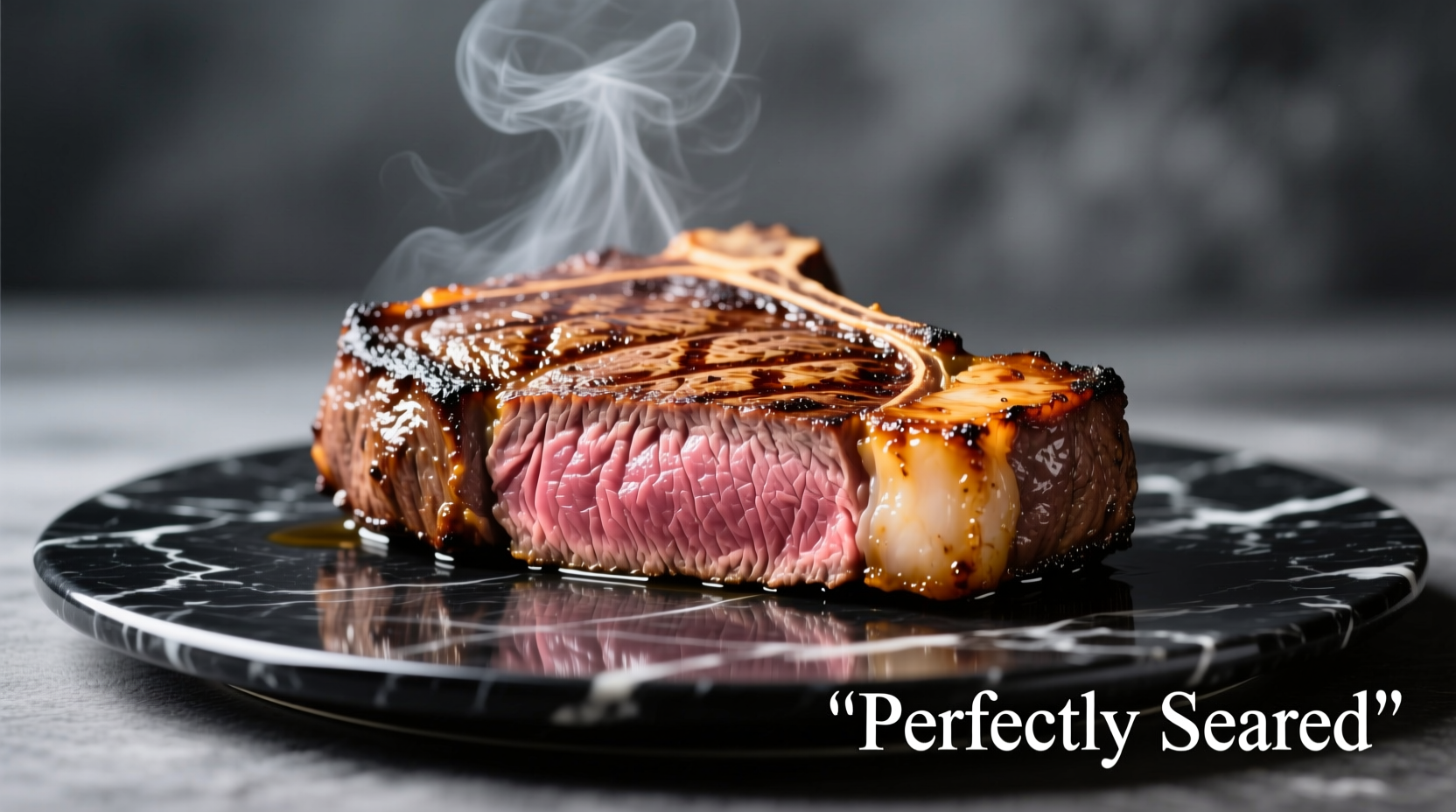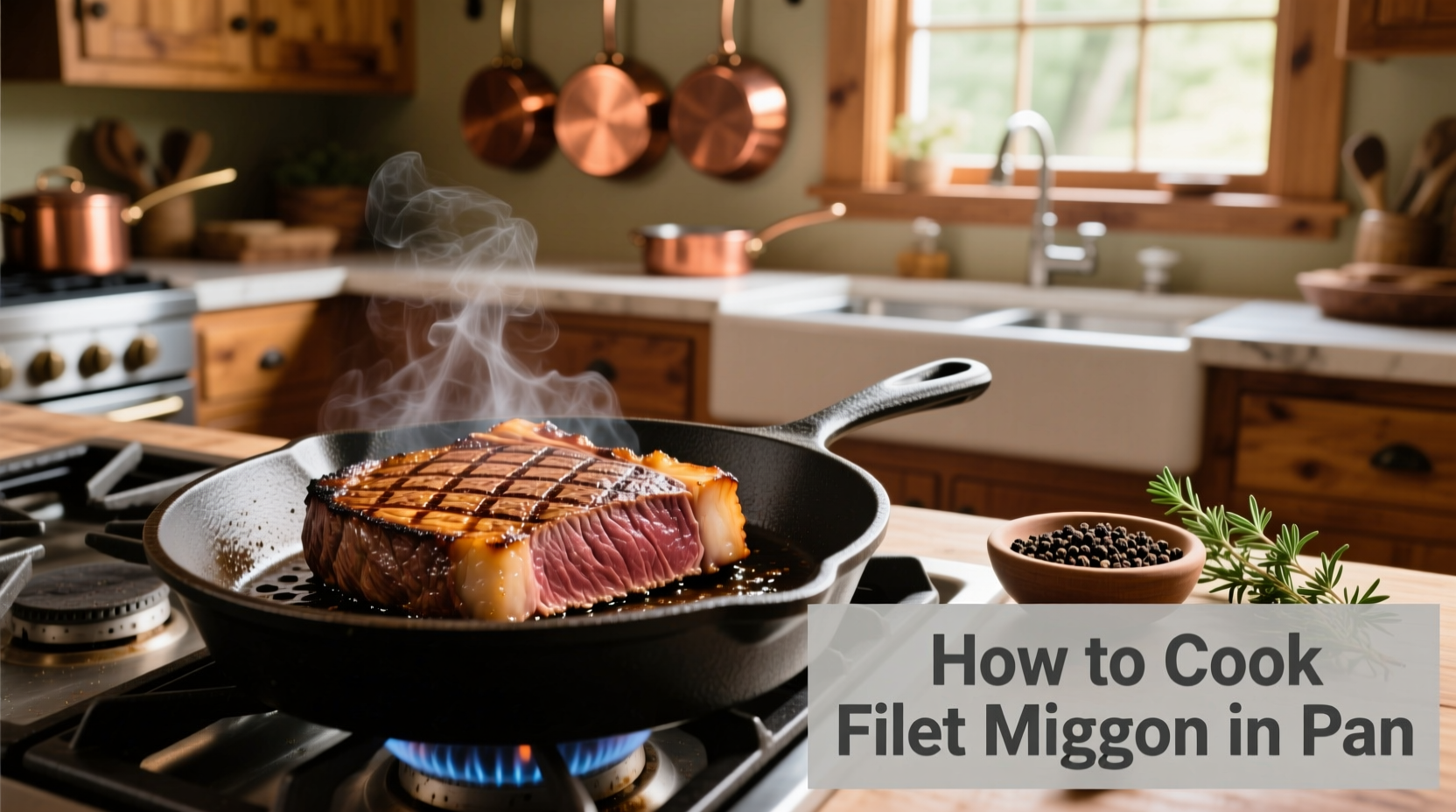Nothing says "special occasion" like a perfectly cooked filet mignon. While many home cooks shy away from this premium cut, pan-searing delivers exceptional results with minimal equipment. In this comprehensive guide, you'll master the precise technique that transforms a simple steak into an unforgettable meal. We've tested every variable so you can avoid common pitfalls and serve steakhouse-quality filet mignon from your own kitchen.
Why Pan-Searing Beats Other Cooking Methods
Pan-searing filet mignon creates the ideal Maillard reaction—that beautiful caramelized crust that locks in juices while developing complex flavors. Unlike grilling, which can cause uneven cooking on this lean cut, the controlled heat of a cast-iron skillet ensures consistent results. According to the USDA Food Safety and Inspection Service, reaching proper internal temperatures is crucial for both safety and quality, making the pan method ideal for precise temperature control.

Your Pre-Cooking Checklist
Success begins long before the steak hits the pan. Follow these preparation steps to ensure optimal results:
Selecting the Right Cut
Choose center-cut filets with consistent thickness (1.5 inches ideal) and bright red color. USDA Prime grade offers the best marbling, but Choice grade works well with proper technique. Avoid cuts with excessive connective tissue or uneven shapes that cook unevenly.
Essential Equipment
You'll need just four items:
- Cast-iron or heavy-bottomed stainless steel skillet
- Instant-read thermometer (critical for precision)
- Tongs for turning
- Wire rack for resting
The Pan-Searing Process: Step-by-Step
Preparation (15-60 minutes before cooking)
Remove steaks from refrigerator 30-60 minutes before cooking. This critical step ensures even cooking—cold steaks develop a gray band inside when seared. Pat thoroughly dry with paper towels; moisture is the enemy of proper searing. Season generously with coarse salt and freshly ground black pepper on all sides.
Heat Management Secrets
Preheat your empty skillet over medium-high heat for 5 minutes until drops of water sizzle and evaporate immediately. Add 1-2 tablespoons of high-smoke point oil (avocado or grapeseed). The oil should shimmer but not smoke—this indicates the perfect 375°F temperature for searing.
| Steak Thickness | Medium-Rare Time | Medium Time | Target Temperature |
|---|---|---|---|
| 1 inch | 2-3 minutes/side | 3-4 minutes/side | 125°F (130°F after resting) |
| 1.5 inches | 3-4 minutes/side | 4-5 minutes/side | 125°F (130°F after resting) |
| 2 inches | 4-5 minutes/side | 5-6 minutes/side | 125°F (130°F after resting) |
Searing Technique
Place steaks in the hot skillet away from you to prevent oil splatter. Press gently with a spatula for full contact. Cook undisturbed for 3-4 minutes until a deep brown crust forms. Rotate 90 degrees halfway through for attractive crosshatch marks. Flip once using tongs and repeat on the other side. For thicker cuts, sear the edges by holding the steak vertically for 30-60 seconds per side.
Temperature Control
Insert an instant-read thermometer horizontally into the thickest part. Remove steaks at 120-125°F for medium-rare—the temperature will rise 5-10 degrees during resting. According to the American Culinary Federation, this precise temperature management prevents overcooking the delicate filet.
Critical Resting Period
Transfer steaks to a wire rack (not a plate) and tent loosely with foil. Rest for 8-10 minutes—this allows juices to redistribute. Cutting too soon releases precious juices onto your plate. During this time, the internal temperature continues rising to the perfect 130-135°F for medium-rare.
Advanced Techniques for Gourmet Results
Butter Basting Method
During the last 2 minutes of cooking, add 2 tablespoons butter, 2 smashed garlic cloves, and fresh thyme to the pan. Tilt the skillet and spoon the melted butter continuously over the steak for enhanced flavor and a professional finish.
Pan Sauce Creation
After removing steaks, deglaze the pan with 1/2 cup red wine or beef broth, scraping up browned bits. Simmer until reduced by half, then whisk in 2 tablespoons cold butter for a luxurious sauce. This technique, taught at the Culinary Institute of America, transforms pan drippings into a restaurant-quality accompaniment.
When Pan-Searing Isn't Ideal
While pan-searing works perfectly for standard filet mignon (1-2 inches thick), consider these context boundaries:
- For cuts thicker than 2 inches, finish in a 400°F oven after searing
- Very thin filets (<1 inch) cook too quickly for proper crust development
- When cooking more than two steaks at once, use multiple skillets rather than crowding
Troubleshooting Common Issues
Problem: Steak sticks to the pan
Solution: Ensure proper preheating and avoid moving the steak too soon. The crust must fully develop before it releases naturally.
Problem: Uneven cooking
Solution: Use steaks of consistent thickness and proper room temperature before cooking. Rotate the steak 90 degrees halfway through searing.
Problem: Burnt exterior, raw interior
Solution: Reduce heat slightly and consider finishing in a 350°F oven for thicker cuts. Always use a thermometer for accuracy.
Perfect Pairings for Your Filet Mignon
Serve with simple accompaniments that complement rather than compete with your premium steak:
- Roasted asparagus with lemon zest
- Garlic mashed potatoes
- Simple green salad with vinaigrette
A bold Cabernet Sauvignon or Malbec provides the ideal wine pairing, cutting through the richness of the steak.
How long should I cook filet mignon in a pan for medium-rare?
For a 1.5-inch thick filet mignon, cook 3-4 minutes per side in a preheated cast-iron skillet. Remove from heat at 125°F internal temperature, as the steak will continue cooking during the 8-10 minute resting period, reaching the perfect 130-135°F for medium-rare.
Should I salt filet mignon before or after cooking?
Salt your filet mignon at least 45 minutes before cooking, or up to 24 hours in advance. This allows the salt to penetrate the meat, enhancing flavor and improving texture. Pat the steak dry before cooking to ensure proper searing.
Why is my filet mignon tough after pan-searing?
Filet mignon is naturally tender, so toughness usually results from overcooking or insufficient resting. Remove the steak at 125°F for medium-rare and rest for 8-10 minutes before slicing. Cutting against the grain also ensures maximum tenderness.
Can I use a non-stick pan for cooking filet mignon?
While possible, non-stick pans don't achieve the high temperatures needed for optimal searing and Maillard reaction. Cast-iron or stainless steel skillets are superior for creating the flavorful crust essential to perfect filet mignon. The high heat tolerance of these materials makes them ideal for steak preparation.
How do I know when my filet mignon is done without a thermometer?
While a thermometer is recommended, you can use the finger test: press the steak gently. Rare feels like the fleshy part of your palm below the thumb when your hand is relaxed. Medium-rare feels like that area when you touch your thumb to your index finger. However, an instant-read thermometer provides the most reliable results for premium cuts like filet mignon.











 浙公网安备
33010002000092号
浙公网安备
33010002000092号 浙B2-20120091-4
浙B2-20120091-4